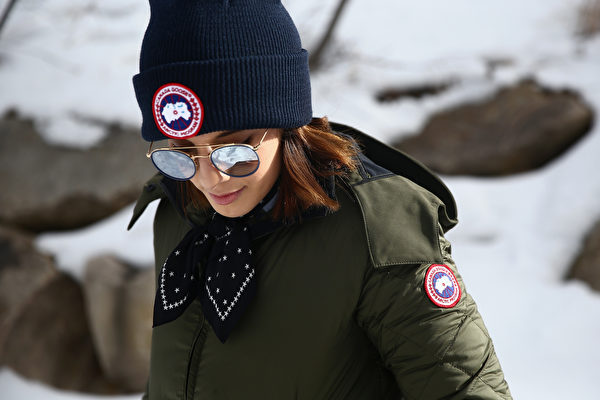For decades, Canada Goose has been renowned for producing parkas and other extreme cold-weather clothing. Now, the Canadian clothing company is shifting its focus towards warm-weather products to expand its market appeal and shopping seasons.
Canada Goose is a Canadian down apparel brand known for its high prices. In the US and Canadian markets, the average price is around 900 USD (Canadian dollars) per piece. In mainland China, the retail price is typically around 10,000 RMB per piece, earning the brand the nickname “Hermès of down jackets” and making it highly sought after by Chinese consumers.
According to a report by The Wall Street Journal on August 28th, this change holds significant meaning for the luxury brand. Less than 15 years ago, heavy down products accounted for 95% of its business. Now, this proportion has dropped to about half. The rest comes from the sales of clothing, sweaters, t-shirts, polo shirts, shoes, and other items, with Canada Goose increasing its focus on more seasonal products, this share may further increase.
In June, the company released 27 new styles suited for warmer seasons, including their first-ever rain boots. In May, they welcomed their first creative director, French designer Haider Ackermann, who was born in Colombia. It is expected that he will focus on designing gear suitable for various climates.
Neil Bowden, the Chief Financial Officer of Canada Goose, stated that a wider range of products presents many possibilities. It brings lower prices – a pure white t-shirt retails for 175 USD, while a parka costs over 1,000 USD. Compared to heavy coats, customers also buy clothing and other items more frequently.
He added that customers buy them throughout the year. “Developing alternative revenue streams is very powerful,” Bowden said. He further explained that expanding the product list could increase the number of repeat customers and new customers.
“The novelty perhaps attracted them. Or, in some cases, if it’s a polo shirt or a lightweight jacket, the product may be easier to buy, allowing consumers to engage with the brand on different levels and gradually upgrade to purchasing parkas,” he said.
For years, the company has been slowly expanding its business beyond heavyweight down products, launching lightweight down items in 2011. In the following years, knitwear, shoes, and sweaters were introduced. Shoppers appreciate these choices, with sales of non-heavyweight down products like polo shirts, turtlenecks, and cotton sweaters increasing by 20% in the quarter ending on June 30 compared to the same period last year.
As of the end of the fiscal year on March 31, non-heavyweight down product sales accounted for 46% of the company’s revenue, higher than 43% from the same period last year. Bowden stated that this growth trajectory is expected to continue.

